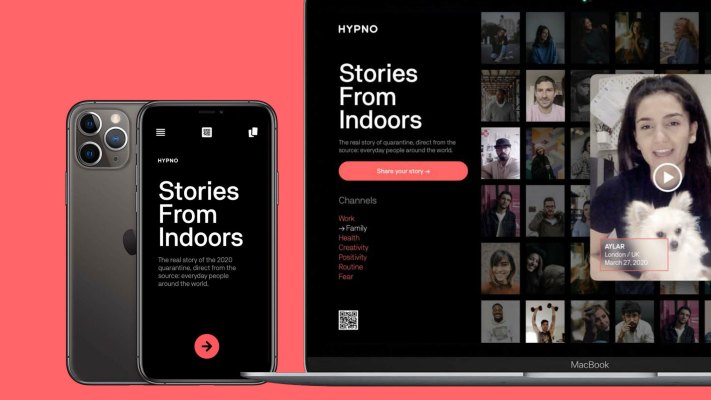What matters about Matter, the new smart home protocol
The VergeHow Matter works, when it’s coming, what you’ll need to use it, and how it integrates with Alexa, Apple Home, Google Home, and Samsung SmartThings. Continue reading…
/cdn.vox-cdn.com/uploads/chorus_asset/file/24390558/236505_Matter_What_Matters_K_Radtke.jpg)
Matter is a common language for smart home devices. It’s designed to simplify everything about the smart home, from purchase to setup and everyday use. Its biggest promise is making smart devices work with each other across platforms and ecosystems, no matter who made them.
This means no more checking for the “Works With” HomeKit, Google Home, or Alexa badges; Matter devices work with all of them and can be part of multiple platforms at the same time. You can control your Matter smart lighting, smart locks, and so forth with Siri, Alexa, Google Assistant, and even Bixby, should you want to. It’s great for multiplatform homes. If you have an iPhone, your spouse has a Samsung phone, and your kid has a Fire tablet, you’ll all be able to control all your Matter devices and feel confident that any new Matter device you buy will work with every smart home platform you use.
Matter can also work entirely on your local network, so gadgets should respond more quickly and work even if your internet is down. Yes, Matter should make turning your smart lights on just as fast and reliable as using a light switch.
Here, we outline the basics of Matter: what it is, which platforms support it, when you can use it, and how it will work with your existing devices. If you want to know more about the technology behind Matter, check out our deep dive into the new standard. If you just want a list of all the devices that work with Matter, check out our list of every Matter-compatible smart home device.
What is Matter?
Matter is an interoperability standard designed to solve many of today’s smart home headaches.
Developed and run by the Connectivity Standards Alliance, Matter is supported by a long list of companies. From platform owners like Apple, Google, and Amazon and major manufacturers such as Samsung and LG to smaller, accessory-focused players like Nanoleaf, Eve, and TP-Link, there’s an unprecedented industry coalition behind Matter, which is why it has a shot at succeeding.
Matter isn’t a new protocol; it’s a specification for how devices should talk to each other. It runs over existing protocols: Thread for low-power, low-bandwidth devices such as light bulbs and sensors, and Wi-Fi or ethernet for higher bandwidth devices like streaming media players and cameras (when they arrive).
The Matter standard is now integrated into every major smart home platform, including Amazon Alexa, Apple Home, Google Home, and Samsung SmartThings, which means that smart home devices no longer have to be certified individually for each platform. Any Matter device will work with all of them, though some platforms may offer extra features or better automation. And for those features, devices will need that extra Works With certification.
A key feature of Matter is that all devices can be controlled locally in your home; they do not require an internet connection to work or to work together. Cloud connectivity is an option, though, and allows for out-of-the-home control and integration with cloud services.
Image: CSA
When is Matter coming out?
Matter officially launched in the fall of 2022; all major smart home platforms now support it, but Matter devices are still few and far between. We tested a few Eve devices with beta Matter support in December 2022 with mixed results.
Following a deluge of product announcements at CES 2023, we now expect a slew of new products — and Matter updates to existing ones — to arrive in spring 2023.
Image: CSA
What smart home gadgets will work with Matter?
The first Matter specification, Matter 1.0, only supports a few categories of smart home devices, and only basic functions are available, like on / off; lock / unlock; motion / no motion; brighten / dim. Matter doesn’t yet support advanced features like dynamic lighting effects, adaptive lighting, shared access codes for door locks, and energy management for smart plugs. But you should be able to access those features through the smart home platform you choose — if they are supported.
This is the current list of supported device categories in Matter:
White goods home appliances (such as fridges and washing machines) and robot vacuums will be included in the spring Matter update. The following device types and systems are next on the road map, according to the CSA:
What do I need to use Matter?
Image: Thread Group
A Matter controller
To add and control Matter devices, you need a Matter controller and a companion smart home platform app. Unlike proprietary hubs and bridges from companies such as Philips Hue and Lutron Caseta, Matter controllers are not brand-specific. As long as it’s a Matter controller, it can control a Matter device — no matter who made it. (It doesn’t get old.)
Their primary role is to onboard devices to your home network, manage communications, control devices and automations, and facilitate remote access (when enabled). Because of this, your Matter controller needs to be a device that is always in your home, always powered, and has a Wi-Fi or ethernet connection to your home network.
Matter controllers are now built into all the flagship smart speakers and hubs of the major smart home platforms. This includes the Apple HomePod Mini, HomePod (1st- and 2nd-gen), and Apple TV 4K; Amazon Echo and Google Nest Hub speakers and displays; and Samsung SmartThings hubs — including some refrigerators and TVs.
Every Matter controller requires a smartphone or tablet app for adding devices and setting up automations. Some apps and mobile operating systems are themselves Matter controllers; Matter control is built into the latest versions of iOS and Android, and several device companies have announced that their smartphone apps will become Matter controllers in the future. But as a smartphone is unlikely to be always on and always in your home, you’ll likely need a standalone Matter controller, too, especially if you want to use Thread devices (more on those in a bit).
It’s worth noting that Matter controllers aren’t necessarily Matter devices. You aren’t going to be able to control an Amazon Echo Show with your Google Nest Hub Max or a Samsung Family Hub fridge with your Apple TV.
A Thread border router
Matter works over Wi-Fi, ethernet, and Thread. Matter controllers take care of Wi-Fi and ethernet devices, but if you have Thread devices, you need a Thread border router to talk to the Matter controller. Helpfully, some Matter controllers are also Thread border routers, so there’s a good chance you already have one.
Illustration by Grayson Blackmon / The Verge
Thread is a low-power, low-latency wireless protocol that creates a self-healing mesh network. This means the more devices you have on it, the better the range and reliability will be since each Thread device only has to be able to communicate with the closest Thread device. Thread works on the same 2.4GHz spectrum as the Zigbee protocol and is designed for the same low-power devices: sensors, light bulbs, plugs, and shades.
But Thread is IPv6 based, which means Thread devices can talk to the internet directly, whereas Zigbee devices require a hub, and often a proprietary one. Thread also has lower latency and is an open protocol — Zigbee has become hopelessly fragmented. Like Matter controllers, Thread border routers are platform-agnostic, so — in theory — any Thread device can connect to them.
Thread border routers don’t need a hardwired internet connection. They just need continuous power and Wi-Fi. This means that, unlike traditional bridges and hubs, they can be almost anything — from a smart light or smart speaker to a fridge, television, or thermostat. In the long run, it’s likely that your next Wi-Fi router will contain a Thread border router.
Which smart home platforms support Matter?
The four big platforms — Amazon Alexa, Google Home, Apple Home, and Samsung SmartThings — all support Matter. This means you can use any of their apps, smart speakers, hubs, and smart voice assistants to manage your Matter devices.
A Matter feature called Multi-Admin lets you control the same Matter devices with multiple platforms. You also don’t have to use one of the big four. Other platforms, like Home Assistant, support Matter, and several companies have already said their apps will become Matter controllers, including the TP-Link Tapo app, the Aqara app, and the Wiser app. And there will likely be more options soon.
You do still need to use a smart home platform, though. Matter doesn’t have its own app, and it isn’t a platform; it’s just the language the devices speak to each other. You’ll need to pick a platform to manage that language and tell your smart thermostat to turn down and your lights to turn off when you lock your door. With Matter, these types of automations will run across devices from different companies that weren’t previously compatible.
So, yes, you will be able to control the new Nest Thermostat with Apple’s Siri or an Eve smart plug with Amazon Alexa. Plus, you can use the Apple Home app on your iPhone to turn on the living room light, and your partner can use the Google Home app on their Android phone to turn it off.
Here is a rundown of each smart home platform’s Matter support:
Amazon Alexa Matter support
Photo by Jennifer Pattison Tuohy / The Verge
A total of 17 Amazon Echo devices — including all of the current lineup — became Matter compatible in December 2022. So far, they only support Matter-over-Wi-Fi — and just three out of the first Matter device types: smart plugs, smart bulbs, and smart switches. In spring 2023, Amazon will update its Echo 4th-Gen smart speaker to be a Thread border router and will expand its Matter support to more device types, including thermostats, blinds, and sensors, in addition to light bulbs, plugs, and switches. All of its remaining compatible Eero Wi-Fi devices and Echo devices and its iOS Alexa app will also become fully compatible with Matter then.
Google Nest and Google Home Matter support
All of Google’s Nest smart speakers and displays can act as Matter controllers. Newer products with Thread built in — such as the Nest Wi-Fi, Nest Wi-Fi Pro, Nest Hub Max, and second-gen Nest Hub — are also Thread border routers. Android devices and the Google Home app are also now Matter-compatible and can add Matter devices to Google Home smart homes.
Apple Home Matter support
Photo by Chris Welch / The Verge
As of iOS 16.1, Apple’s HomePod, HomePod Mini, and 2021 and 2022 Apple TV 4K models are already Matter controllers. The HomePod Mini, Apple TV 4K Wi-Fi + Ethernet (2022), and Apple TV 4K (2021) are also Thread border routers. All Apple’s operating systems — watchOS, iPadOS, macOS, tvOS, and HomePod software — are also Matter certified, and the Apple Home app and Siri voice assistant support Matter. The company has said all existing HomeKit APIs will automatically work with Matter-enabled accessories.
The new Apple HomePod (second-gen) will be a Matter controller and a Thread border router when it arrives in February.
Samsung SmartThings Matter support
The SmartThings apps for iOS and Android are Matter-compatible. Samsung’s v2 and v3 SmartThings hubs have been updated to work as Matter controllers, and the v3 hub and Aeotec SmartThings hub are now also Thread border routers.
The new $60 SmartThings Station is also a Matter controller and Thread border router, as well as a 15W fast wireless charging pad for Galaxy smartphones and earbuds.
Samsung says the SmartThings hub in its Family Hub fridge line will get Matter support in January 2023 and Samsung TVs and monitors in March (for 2022 and newer models). The SmartThings Hub Dongle — which adds Thread and Zigbee control to Samsung fridges and TVs — will be updated to Matter in the first quarter of 2023 and will work as a Thread border router. Going forward, new Samsung products, including TVs, monitors, and smart fridges, will support Matter, Zigbee, and Thread natively.
SmartThings hubs will not bridge existing devices into Matter. So, your connected Zigbee and Z-Wave devices won’t show up in other Matter ecosystems — only in SmartThings. Samsung has also confirmed its appliances and TVs will not be Matter devices, so you won’t be able to control a Samsung TV or washing machine through Matter.
Can my existing smart devices use Matter?
Matter is designed to include devices already in our homes, and while some devices that companies said might get upgraded to Matter now won’t, there are upgrade paths for other gadgets.
Aqara’s existing hubs, including the M2 Hub (left), G2H camera hub (center), and M1S hub (right), will be updated to bridge connected Aqara devices into Matter.
Current devices that can’t be upgraded to Matter will continue to work with the platforms they already work with. They will coexist with Matter devices on those platforms and can be used alongside them in routines and automations.
Current devices that can’t be upgraded to Matter will continue to work with the platforms they already work with
Bluetooth-only devices that don’t rely on bridges, such as Eve’s earlier line of security and sensor products or GE Cync’s Bluetooth mesh bulbs, can’t be updated to work with Matter since Matter only supports Bluetooth for device setup. Eve has already rolled out new Thread-enabled versions of almost its entire range of Bluetooth products.
Because the Matter specification was delayed several times and only finalized in late 2022, several manufacturers — including Nanoleaf, Belkin WeMo, and Schlage — shipped Thread products that they expected to update with Matter support, only to find that the hardware couldn’t handle the software requirements of the final version.
Instead, all those companies have announced plans to launch new Matter-enabled products in 2023. It’s a good idea not to buy any Thread products going forward until they have Matter support.
What about Z-Wave and Zigbee?
There aren’t currently any Z-Wave hubs that will expose their Z-Wave devices to Matter. Homey says its upcoming Homey Pro hub ($399, slated for February 2023) will act as a bridge to bring any non-Matter device into Matter (as long as it’s a device type supported by Matter).
However, according to Jaeyeon Jung, head of SmartThings at Samsung Electronics, this is not trivial. “Looking at each legacy device and coming up with a way to convert each to Matter would be a huge process,” she said. “We still have to look at all the technical details to see if that would be possible.”
The Z-Wave Alliance is promoting solutions to bridge existing Z-Wave devices into Matter. Chipmaker Silicon Labs has developed both software and hardware solutions to enable this. But none of these have yet made their way into products you can buy.
For now, if you have Z-Wave or Zigbee devices, stick with whatever hub you are already using or switch to SmartThings or Home Assistant if you want Matter and your current platform won’t support it.
Will I still need hubs and bridges to run my smart home?
Yes. If you have devices that work through a bridge today, you will need to keep your bridges and hubs to continue using these devices. This applies to things like Philips Hue lighting products, Aqara sensors, Z-Wave and Zigbee devices going through a hub like Samsung SmartThings or Hubitat, or Ikea smart home devices on its older Trådfri gateway. (Ikea has released a new hub that it says will be compatible with Matter.)
“In the long run, Matter will take over, and eventually, you’ll just get rid of all the bridges.”
In an ideal world, you should not have to buy any more bridges or hubs. “Matter is going to be cheaper for device makers. It’s going to be cheaper for a lighting company, for example, to make an IP-based bulb [than continue to build bridges],” says Chris LaPré, head of technology for the CSA. “In the long run, Matter will take over, and eventually, you’ll just get rid of all the bridges.”
However, Signify — which owns Philips Hue — has said it will continue to use a bridge with its Zigbee-based lighting products and has no plans to make any of its other products directly Matter enabled.
Is Matter private and secure?
Smart home adoption has been slow as people are concerned about their privacy and security. The CSA says keeping devices secure is a core tenet of Matter. “We use specific industry-standard encryption technology, and every device gets authenticated before it joins the network,” says Michelle Mindala-Freeman, head of marketing at CSA. “Every message is secured on the network, and Matter supports secure over-the-air updates.”
In terms of your home’s data, that relationship remains between you and the individual manufacturers, says Mindala-Freeman. However, Matter’s privacy principles outline data privacy protections, including minimizing how much data is shared in any Matter interaction and defining the purpose of data sharing when requested. As a bonus, you won’t have to continually input your passwords to connect ecosystems, explains the CSA’s LaPré.
The significant advantage of Matter devices — direct IP control that lets them speak straight to the internet — is also seen as a security concern. The CSA says Matter’s security approach delivers security that is “strong, agile (to address the evolution of things like encryption types over time), and proactive, with a community of members who do threat modeling and mitigation,” says Tobin Richardson, president and CEO of the CSA.
The approach is one of resilient security while still getting the benefits of an IP-connected world “rather than security by obscurity,” he says. Until devices are out in the wild, confirming this approach’s proficiency is hard, but the intent checks all the right boxes.
Which smart home device categories don’t work with Matter?
Image: Ring
Smart security cameras don’t currently work with Matter, but the CSA has said they will be part of a future update. How that will work in practice is unknown. Apple contributed the framework of its HomeKit smart home platform to Matter, so it’s possible that its HomeKit Secure Video may also be part of that contribution. We’ll have to wait and see.
Smart sensors are part of Matter, but home security systems are not — yet. Many smart homes run with an alarm system as the main hub, so the lack of integration here could be a deal-breaker for some.
Mitch Klein, executive director of the Z-Wave Alliance — which oversees a technology used widely in home alarm systems for door / window sensors, motion sensors, and other devices — explains it may not be easy to port that technology to Matter. “Securing UL approval for security devices is exceptionally difficult, and Matter has numerous challenges here,” he says. “UL is a benchmark and often an insurance requirement. All professionally-installed security systems insist on UL approval.”
Speaking of cameras and alarm systems, one of the biggest smart home companies in both these spaces — Ring — hasn’t offered any indication it will support Matter, although its parent company Amazon is fully involved in the standard.
Whole home audio streaming (the tech from speaker companies like Sonos and Bose) is not currently supported, and we don’t know how Alexa, Apple, and Google’s current multiroom music streaming solutions will integrate with Matter. There is a Matter casting feature in the specification, but so far, no implementations have been announced.
Update January 27th, 2023, 4:30PM ET: Moved the list of Matter products to a new article and updated language throughout.
Update January 3rd, 2023, 5:05PM ET: Updated to reflect Matter updates and rollouts (and some delays) through the end of 2022.
Update November 16th, 2022, 3:45PM ET: This article was originally published in October 2021. Following the launch of Matter this month and the beginning of the availability of products, we have revised much of it to keep it current.

 BigThink
BigThink 































